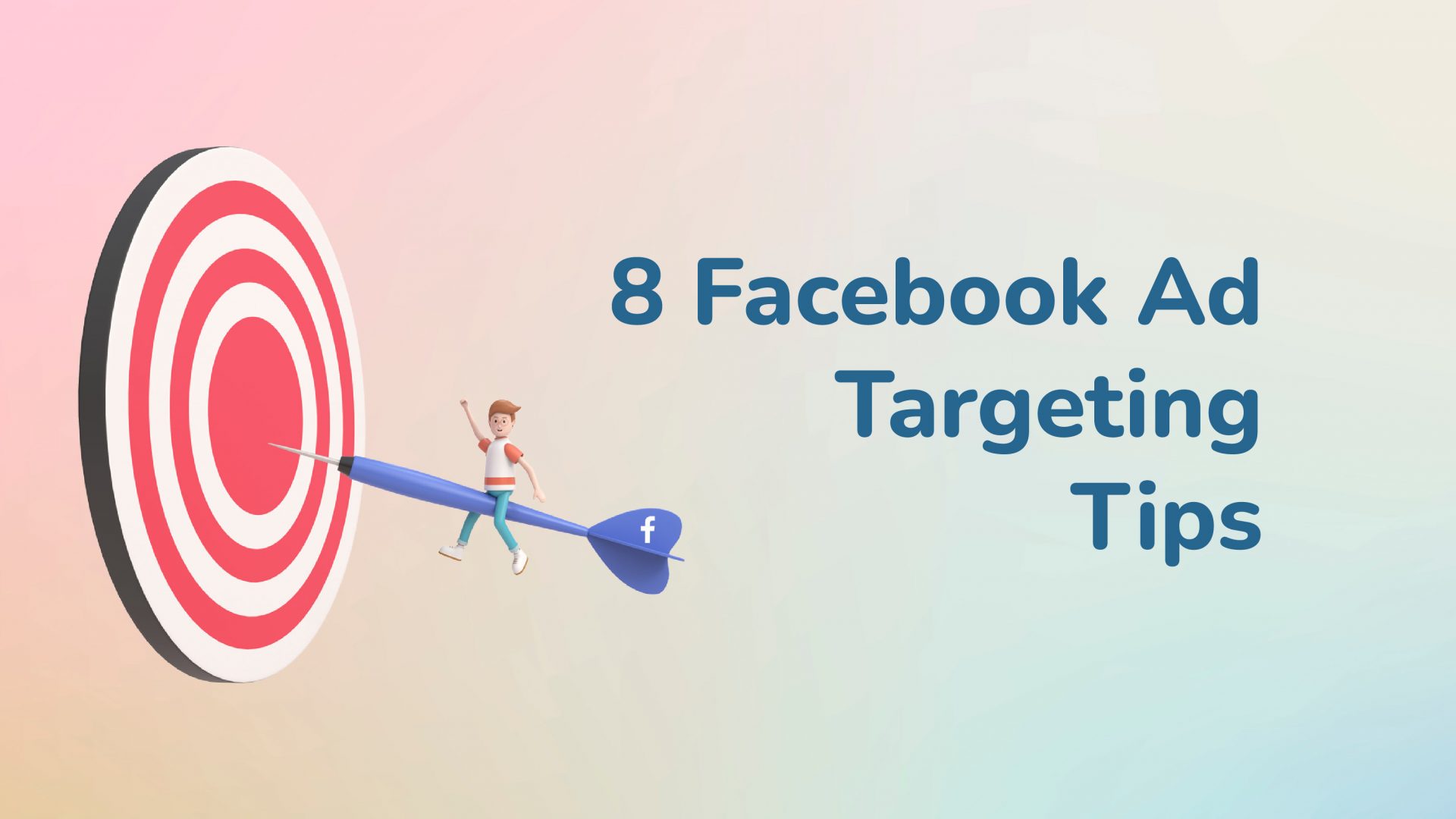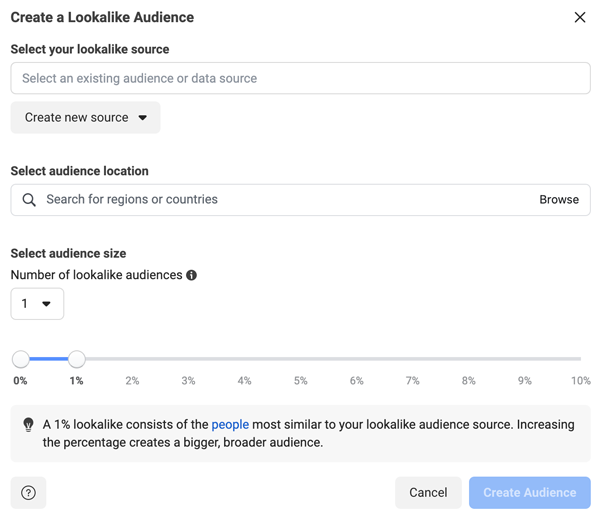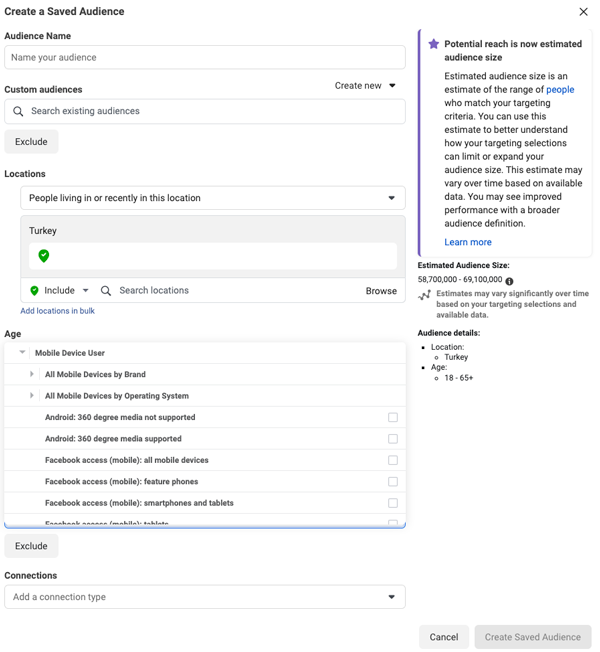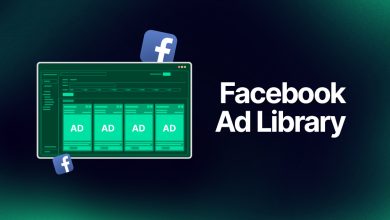8 Facebook Ad Targeting Tips

- 1. Find your unique content first
- 2. Target the customers of your competitors using Audience Insights
- 3. Remarketing with Custom Audiences
- 4. Utilize Lookalike Audiences to find individuals who resemble your current clients
- 5. Using layered targeting, achieve extreme precision
- 6. Try mixing two different audiences
- 7. Search Ad Relevance Diagnostics for opportunities to improve targeting
- 8. Ad targeting for various devices
- To sum-up
Effective Facebook ad targeting raises conversion rates while decreasing cost per conversion, which is the key indicator of an ad’s worth. Continue reading to learn the eight Facebook ad targeting tips and strategies you need to boost the effectiveness of your Facebook ads and make the most of your cash.
Facebook ads are a competition where winning is dependent on audience targeting. With a dozen distinct ad styles and dozens of potential ad targeting characteristics, you can target audiences on Facebook.
The explanation is straightforward: better Facebook Ads targeting increases conversion rates. And increased ROAS is a result of higher conversion rates (return on ad spend).
1. Find your unique content first
90% of traffic is often generated by 2 to 5 posts on the majority of blogs and websites. Use your existing blog’s top-performing posts as inspiration for your Facebook ad campaigns if you have one.
Your material can be transformed into:
- Infographics
- A sales letter in video
- Free video instruction
- Online books
- Various perspectives for your ads
You need as many testable ad concepts as audiences you produce. You may swiftly and thoughtlessly fill that gap by reusing your high-performing content. The options are essentially limitless. You should experiment with several forms for your recycled material until you discover one that works.
2. Target the customers of your competitors using Audience Insights

You can get a lot of useful information about your Facebook followers through Facebook Audience Insights. The information may then be used to inform your targeting of prospective new followers and consumers.
It’s such a gold mine that we’ve written a whole post about utilizing Audience Insights to improve targeting. However, our preferred Audience Insights tactic is to leverage the data it offers to identify your Facebook competitors before focusing on their existing fans.
Here is a brief guide:
- Select “Everyone on Facebook” from the Audience Insights dashboard once it is open.
- Use the basic targeting parameters like geography, age, gender, and hobbies under Create Audience on the left side of the screen to create an audience that closely resembles your target audience profile.
- To find out which pages your target audience already connects with, click the Page Likes tab. This list may be copied and pasted into a text or spreadsheet file.
- Return to the Create Audience tab and enter the name of a Facebook page run by one of your rivals in the Interests box. Although not every contender will show interest, for those that do…
- See if you can get any new audience insights from the demographic data on the right side of the page that will help you target your advertising more accurately.
- Based on these fresh demographic information, create a new audience, then compare it to one of your current audiences for testing.
- Alternatively, you may just click Save to create an audience made up of followers of your competitors.
This is a great method to start identifying relevant people on Facebook, but you can certainly target this demographic more precisely to make sure you get the greatest fit for your unique business and campaign goals.
3. Remarketing with Custom Audiences

Remarketing is a great Facebook targeting technique for reaching out to prospective clients who have previously shown interest in your goods.
You may select to show your ads to individuals who have recently visited your website, sales pages, or even specific goods using the targeting options available in Facebook Custom Audiences. If you believe recent buyers are unlikely to convert again soon, you can also decide to exclude them.
Installing the Facebook Pixel is required before you can use Facebook Custom Audiences based on website visits.
Here’s how to build your remarketing audience after that:
- With your Ads Manager, navigate to Audiences
- Select Custom Audience
- Click Website Traffic
- Decide on a pixel
- Define your targeting criteria
- Select Create Audience after giving your audience a name
4. Utilize Lookalike Audiences to find individuals who resemble your current clients

You may create targeted lists of potential consumers with Facebook Lookalike Audiences who have traits in common with individuals who have already made purchases from you. Therefore, you may maximize your return on investment by focusing on additional mid-30s moms who reside in Austin if the data indicates that your current customers are likely to be Austin-based mothers in their 30s.
That’s also a very general illustration. Actually, Facebook’s technologies have considerably more advanced audience matching capabilities. Additionally, you don’t even need to be aware of the data points you’re attempting to match when using Lookalike Audiences. Facebook will make that determination for you.
So, here’s a quick brief on how to use Lookalike Audiences:
- Enter your Ads Manager and choose Audiences
- Click Create a Lookalike Audience
- Pick the audience for your source. This is the group of current clients or supporters whose traits you desire to mimic
- Decide which areas to focus on
- Pick the size of your audience. Smaller numbers better reflect the characteristics of your source audience
- Then choose Create Audience
5. Using layered targeting, achieve extreme precision
There are several targeting possibilities on Facebook. The selections are first broken down into three major categories: habits, interests, and demographics. However, things get quite specific within each of these groups. For instance, you may select to target parents under demographics. Then you may focus primarily on parents of young children by further refining your target.
You may select a target based on relationship status and industry of employment under demographics as well.
Consider what happens when you begin merging these targeting layers. You can decide to target management-employed divorced parents of young children. And it is merely a demographics-based analysis.
6. Try mixing two different audiences
Naturally, not every product or promotion can benefit from the type of exact Facebook targeting described in the aforementioned recommendation.
Perhaps you are unsure of the precise demographics or behavior groups you wish to target with a certain ad. You simply have a general idea of the target category. So what do you do if your target market is simply too big?
Even if the second audience looks entirely unrelated, combine it with it.
7. Search Ad Relevance Diagnostics for opportunities to improve targeting
Facebook introduced three new “ad relevance diagnostics” in the beginning of 2019 to replace its relevance score:
- Quality evaluation
- Ranking of engagement rates
- Ranking by conversion rate
People want to view ads that are relevant to them, according to Facebook. Additionally, companies see greater business results when they display their adverts to suitable consumers. Because of this, before presenting an ad to a person, we analyze how relevant each ad is to that individual.
The goal of Facebook ad targeting is to show your ad to the audience that is most likely to act on the basis of that particular ad. This is relevancy in all its purest form. To assist you in raising your ranking scores for Facebook’s ad relevance diagnostics, we’ve written a complete post on it. Below are a few succinct highlights:
- Put quality first, focusing on both strong graphics and concise writing
- Pick the appropriate ad format
- Aim for a modest frequency of ads
- Time uses ads wisely
- Use A/B testing to improve your Facebook Ads
- Keep an eye on the ads of your competitors
You may utilize the ad relevance diagnostics to search for chances to enhance targeting if your ads aren’t working as well as you’d like:
Low quality ranking: Consider altering the target demographic to a group that is more likely to enjoy the specific creative in the ad.
Low engagement rate ranking: Refine your targeting to attract folks who are more likely to engage if your engagement rate is low. Here, Audience Insights may be a big assistance.
Low conversion rate ranking: Choose an audience with better intent. Simply choosing “interested shoppers” under purchasing behavior might do this. However, it may also entail focusing on individuals who are approaching an anniversary or who are experiencing another behavior or life event that makes your product or service particularly pertinent to them at this precise moment.
Keep in mind that finding the correct audience for your ad is the key to relevancy. No ad will be applicable to everyone. The only way to continually have a high relevance rating is through effective targeting.
8. Ad targeting for various devices

Say your software is only compatible with devices running Android 10 and later. Then you would want to choose users of Facebook on Android-powered smartphones running that OS.
The firms offering technology, such as computer software or mobile applications, are not the only ones who may use this Facebook ad targeting feature. You may even utilize this option if you sell something as basic as iPhone chargers and cases.
Don’t forget to optimize your campaign for mobile usage as targeting mobile consumers also implies that they will view your ad on their phones.
To sum-up
Facebook ads are a great way to rapidly boost your ROAS. To boost your conversion rates and lower your CPC, however, you must understand how to target people in the most precise manner.
The advice and tactics mentioned are only the top of the iceberg. To become an expert at Facebook ad targeting, you must be innovative, conduct your own research, and iterate over and over again.
But if you adhere to these best practices, you’ll have a better chance of learning the game’s rules. Go for your next Facebook ad campaign instead of becoming stuck in analysis paralysis!
Furthermore, to prevent Facebook ad errors, link your Facebook Ads account to WASK, control all of your data, and publish new ads. For your ads, you may also employ optimization and smart audience techniques. Using WASK, it’s simple to manage your target audiences and all of your Facebook ads from one location.





I value the blog.Thanks Again. Will read on…